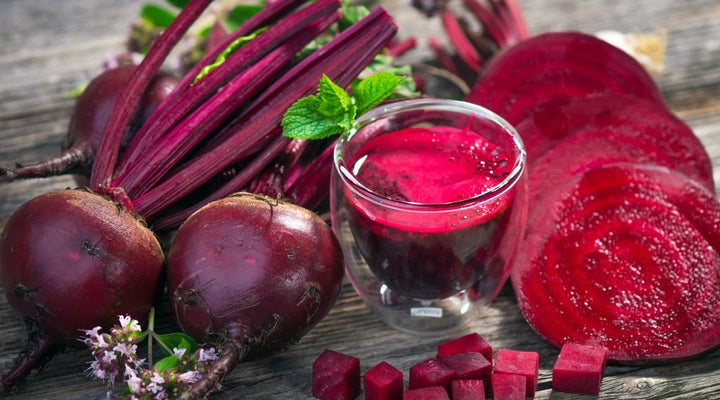
Is What You’re Sipping Safe? A Thorough Breakdown Of The Most Common Toxins Found In Coffee
Key Takeaways
The presence of toxins in coffee can threaten the health of consumers. Many pesticides, mycotoxins, and forever chemicals (PFAS) are commonly found in conventionally grown coffee, with organic and specialty coffees being regarded as safer options for consumption due to the absence of these harmful toxins.
- Traditional coffee growing methods routinely use pesticides and PFAS throughout production.
- Mycotoxins are also commonly found in coffees grown using conventional (non organic, unsustainable) methods.
- Common pesticides found in coffee include those within three broad categories - organophosphates, pyrethroids, and carbamates - 15 of the most routinely used pesticides are detailed within this article.
- PFAS are man made chemicals which accumulate in the body, are seen as indestructible, and lead to many health concerns. These are found in coffee due to residue on the beans from soil, from contaminated water sources in processing, and from packaging materials.
- Mycotoxins are produced by fungi present in coffee and other food items. While these toxins can occur naturally, they pose serious health risks, including immunological, neurological, and gastrointestinal problems as well as an increased risk of cancer, etc.
You know coffee is tremendously tasty, each glorious sip testifies to this truth.
Even better, you’ve also likely heard that this decadently delicious cup can bring many benefits to your health and wellbeing.

So far so good, right?
Unfortunately, you may have been hearing more and more about the common presence of toxins in coffee as well…and this can definitely put a damper on your morning mug routines, making you question your coffee choices.
The thing is, we all want to know that what we’re routinely putting into our bodies is safe, clean, and healthy.
So, when it comes to harmful toxins in coffee, which cups rightly signal a cause for alarm, and which mugs reign magnificent?
Spoiler alert - the good news for Lifeboost Coffee customers is organically grown, specialty coffee has indeed been found to be a much safer option than conventionally grown java, and today we’d like to spend some time detailing why.
From pesticides and mold-produced mycotoxins to PFAS (forever chemicals) and more, many coffees on the market today may actually be doing more harm than good, as these toxins have been linked to a wide variety of health concerns.
What toxins are typically found in conventionally grown coffee?
And, just how harmful can their presence be?
Let’s find out…
A Breakdown Of Toxins Commonly Found In Coffee - Pesticides, PFAS, & Mycotoxins
When it comes to the alarming claim that toxins are heavily prevalent in coffee, this most often refers to conventionally grown coffee, as USDA certified organic coffees must adhere to strict guidelines, those which prohibit the use of chemical fertilizers and pesticides in the growing process.
These coffees are also sustainably grown with a priority placed upon promoting biodiversity and preventing pollution to soil, air, and water.
Unfortunately, for those types of coffee grown using traditional methods, we see an entirely different picture or story.
Due to the practices commonly incorporated in conventional coffee production, pesticides, mycotoxins, and PFAS (forever chemicals) are a real concern.
So, let’s take some time to look at the toxins related to each of these categories to get a better picture of what can be lurking in such coffees.
Pesticides

Pesticides are routinely used in traditional coffee growing methods.
As market demands impose pressures of mass production, growers essentially need to ensure crop yields aren’t negatively affected by pests, which necessitates chemical intervention.
With this in mind, there are a wide variety of pesticides that are used in conventional coffee production.
Usually, these fall into one of three categories: organophosphates, pyrethroids, and carbamates.
Organophosphates are a class of pesticides which contain phosphorus, and these are considered highly toxic.
Pyrethroids are an insecticide used primarily for their potent toxicity to insects, particularly bees, and these are said to be long lasting.
Carbamates are chemical compounds of carbamic acid, used in insecticides, nerve agents, and pharmaceuticals.
Within these three classifications, the following pesticides are commonly incorporated when growing coffee using traditional methods:
1- Abamectin
A moderately hazardous nerve poison that paralyzes pests, its primary toxifying effects are seen when consumed orally.
It is legal for use in most places, though California lists it under Prop 65 due to reproductive toxicity, Europe has restricted its usage to greenhouses, and Kenya has banned its use in open fields.
2- Aldicarb

This soil insecticide is considered to be highly hazardous, extremely toxic, and is one of the most potent carbamates.
It has been widely used in Brazil, and therefore it can be found on non-organic coffees grown in this region.
3- Chlorpyrifos
This organophosphate insecticide has been banned for both crop and household use in the US since 2021 as it has been shown to be developmentally neurotoxic in children.
Studies conducted on coffee sold in Egyptian markets revealed this pesticide to be present in both green and roasted coffee, with those coffees containing the highest concentrations having been grown in Brazil.
4- Cirponconazole/cyproconazole

This is a common fungicide used in non-organic coffee production, and it has proven to be most toxic to humans.
The greatest concern here arises in long term exposure or consumption, which has shown to cause damage to internal organs, most specifically the liver.
In the US, this has been restricted for household use due to reproductive toxicity.
5- Cypermethrin/ZetaCypermethrin
Residues of this pesticide can remain on coffee beans, even after processing.
While considered moderately toxic, it can be neurotoxic. Studies have shown that chronic exposure may lead to liver and kidney damage as well.
6- Dichlorvos/DDVP
Due to the highly hazardous nature of this insecticide, its use in agriculture, including coffee production, has been banned in the US, Europe, and many other regions.
However, there is currently no universal ban, nor is there real-time data on its usage in every country - some regions still allowing for its use include Latin America (Columbia), Vietnam, and India.
7- Endosulfan

This pesticide is considered highly toxic and is known as a persistent environmental pollutant, meaning it doesn’t easily break down, contaminating soil and waterways for a long time.
When consumed, this toxin can easily accumulate in fatty tissues.
Long term exposure can cause irregular heartbeat, reproductive, developmental, and neurological damage, as well as harm to the liver and kidneys, even death.
8- Haloxyfop
This is an herbicide used in coffee production which may remain on green coffee beans after processing.
Once commonly used in Europe, its moderate toxicity levels have led to it now being banned.
9- Imidacloprid
Toxic to bees, other insects, aquatic life, and mammals (including humans), this insecticide is associated with developmental delays and impaired immune function.
Low dose exposure to imidacloprid has been shown to have long term negative effects on the liver, thyroid, and body weight.
10- Parathion Methyl

This organophosphate pesticide is considered to be one of the most toxic.
It is highly restricted in the US and Columbia, and it is banned in Indonesia.
Unfortunately, there is evidence of unsafe use in Central America, and its regularly misused in some developing countries.
It is also known to be persistent in soil.
Long term exposure has been linked to depression, anxiety, irritability, allergic asthma, some cancers, and more.
11- Permethrin
This insecticide is commonly used in traditional coffee production and the EPA has classified it as “likely to be carcinogenic to humans” with chronic oral exposure.
Long term negative effects on the kidneys and liver have also been noted.
12- Phorate

An insecticide that is considered highly toxic, phorate has been banned in more than 38 countries; however, it is still approved by the EPA in the US, including imported coffee.
Long term exposure is linked to nervous system damage, kidney damage, and respiratory problems.
13- Propiconazole
Considered more hazardous than cirponconazole/cyproconazole, this fungicide is banned in the EU for use as well as in detection on imported goods, such as coffee.
14- Terbufos
The World Health Organization has classified this pesticide as “extremely hazardous.”
Many countries, including the US, Europe, and Africa have moved to ban terbufos, but Brazil is still known to use this when growing coffee.
Due to runoff, even drinking water is reported to contain traces of this pesticide.
15- Triadimefon
This fungicide is not approved for use in the EU and restricted for use in the US, but in countries with regulations that are less strict, it is still used on coffee plants to mitigate leaf rust, etc.
In humans, it can block dopamine transporters, it is carcinogenic. and its long term or chronic effects negatively impact the liver and reproductive system.
Sadly, this isn’t an exhaustive list as there are, in fact, hundreds of pesticides used in coffee production.
And, pesticide use isn’t the only concern in conventionally grown coffee.
PFAS - Forever Chemicals

PFAS are man-made chemicals that are described as indestructible. This is why you commonly hear them called ‘forever chemicals.’
When exposed to these chemicals, they can accumulate in the body over time, leading to a variety of health concerns including an increased risk of many types of cancer, impaired immune function, hormonal disruption/interference, liver damage, thyroid disease, and much more.
Since studies have shown coffee drinkers tend to have higher levels of PFAS in their blood, we wanted to explore exactly how these toxins are making their way into the average brew.
First, PFAS can make their way into coffee through:
- Soil contamination (often due to pesticide use) which is absorbed into the coffee bean
- Water used in processing
- Packaging
But, the water you use in brewing, as well as the way you brew your coffee can contribute to their presence as well.
As far as water, PFAS can contaminate drinking water, and this is why we routinely recommend using filtered water when brewing.
Then when brewing, to avoid PFAS:
- Choose reusable stainless-steel filters as opposed single-use paper filters which are sometimes treated with pfas coatings.
- Opt for brewing equipment made from glass or stainless steel.
- Skip paper and plastic disposable cups when sipping, instead using PFAS free items such as non-coated travel mugs and cups.
- Look for pods and sachets made without PFAS (Note: Lifeboost coffee pods are made from 100% compostable plant fibers.)
Mycotoxins

Lastly, let’s take a look at mycotoxins.
Mycotoxins are toxins produced from mold or microscopic fungi that form on food products, including coffee.
When coffee is grown in warm or humid conditions without measures in place to mitigate mold growth, or when coffee isn’t stored properly during processing, mold can form on coffee beans which then contributes to the growth/presence of mycotoxins.
While mycotoxins, unlike pesticides and PFAS, occur naturally, they can still cause a wide range of health concerns, including:
- Headaches
- Dizziness
- Anxiety
- Cognitive decline
- Increased risk of asthma
- Digestive distress (nausea, diarrhea, vomiting, IBS)
- Increased risk of some cancers
- Liver damage
- Brain fog
- Impaired immune responses
- Kidney damage
The following list details the most common mycotoxins found in conventionally grown coffee.
1- Aflatoxins (B1, B2, G1, G2)
These are a group of toxic compounds produced by aspergillus fungi.
Of these toxins, Aflatoxin B1 is the most common toxin found in coffee, and the most frequently studied, due to its severe and highly carcinogenic effects.
Aflatoxin B2 is slightly less potent than B1, but it is also classified as carcinogenic, meaning these toxins have the ability to cause cancer.
G1 and G2 are less prevalent and less potent, though these can still occur in coffee and do cause health concerns, especially with long term exposure.
As a whole, long-term exposure to any/each of these aflatoxins is associated with an increased risk of cancer, liver failure, immune suppression, and even death.
2- Ochratoxin A

While aflatoxins (B1, B2, G1, G2) are by far the most toxic mold byproducts found in coffee, ochratoxin A is considered to be the most common toxin found in java, and what makes this toxin more prominent is its resistance.
Many have found that the roasting process serves to remove a significant amount of aflatoxin B1; however, ochratoxin A is known to survive this process.
Even worse, ochratoxin A has been found in more than 50% of all coffee samples tested.
And, while it isn’t considered as dangerous when compared to aflatoxins, this comparison shouldn’t be used as a means to lessen its risks.
Ochrotoxin A is associated with:
- Kidney damage
- Liver damage
- Impaired function of immune cells
- Increased risk of cancer
- Birth defects (in animal studies)
- Neurological disorders
- DNA damage
3- Fumonisins
These are toxins produced by fusarium molds. They often grow during coffee harvesting, processing, and storage.
While studies on human effects are limited, these toxins commonly cause gastrointestinal distress as well as kidney, liver, and immune system toxicity in animals.
4- Trichothecenes
This technically describes an entire group of mycotoxins found in coffee, and they are considered a naturally occurring poison.
Headache, nausea, dizziness, vomiting, diarrhea, immune suppression, and more have been associated with exposure to trichothecenes.
5- Zearalenone

This mycotoxin is also in the fusarium family, and while not widespread, it has been noted in many tested coffee samples.
Its most notable detriments include hormonal imbalances and infertility, commonly linked to its ability to bind to estrogen receptors.
It can also cause liver damage, immune system suppression, gastrointestinal issues, and an increased risk of cancer.
6- Diacetoxyscirpenol
This toxin is typically only found in those coffees contaminated with fusarium fungi, but its presence can cause vomiting and diarrhea, which can lead to improper nutrient absorption with long term exposure.
7- Patulin
This mold-causing toxin is most commonly found in rotting apples, but it has also been found in coffee.
While not as potent as aflatoxins and ochratoxin, patulin can cause gastrointestinal, neurological, and immune system problems.
The bottom line?
Coffee can be one of the healthiest foods/beverages you consume.
Its rich antioxidant profile alone has been shown to provide a wealth of benefits.
However, these benefits can be negated, turning your brew into a nightmare plagued with an increased risk of cancer, neurological and immunological issues, kidney and liver damage, gastrointestinal distress, and much more due to the presence of pesticides, PFAS, and mycotoxins, each of which can have a highly negative effect on your health.
This is why choosing an organic, sustainably grown coffee, one produced by a company that takes extra measures throughout their growing, harvesting, and processing methods, is imperative for health (and for taste).

FAQ
1- How can I know that the coffee I’m drinking doesn’t contain pesticides, mycotoxins, and/or pfas?
The first thing to look for when choosing a toxin-free coffee is USDA organic certification.
When a coffee is grown under these standards, you can rest easy knowing no chemicals are used in the growing process.
Then, be sure to take note of how the coffee is washed as contamination can occur during this process as well.
Also, look for coffee that has been third party tested for these toxins, fully ensuring that what you’re sipping is clean, pure, and healthy.
And, as we stated in the article above, always use filtered water, and opt for toxin-free brewing materials.
2- Is Lifeboost Coffee toxin-free?
Our TrustPure Process combined with the extra measure of USDA organic certification ensures our farmers never use pesticides (or any chemicals) in the growing process, instead working with native plants and animals - prey, pollinators, and predators - to improve biodiversity and ensure healthy coffee plants and a healthy planet.
Our coffee is then spring water washed to ensure no contamination occurs during processing.
Then, as an extra measure, all Lifeboost Coffee is third party tested not only for pesticides, but for molds, mycotoxins, heavy metals, and more than 450 other toxins to ensure you get a clean, pure, and healthy brew…always!
Truly Revolutionary Coffee. You'll Love The Taste To The Last Drop!
Espresso
Check out Lifeboost Coffee Embolden Dark Roast.
Medical Disclaimer
This content is for informational and educational purposes only. It is not intended to provide medical advice or to take the place of such advice or treatment from a personal physician. All readers/viewers of this content are advised to consult their doctors or qualified health professionals regarding specific health questions. Neither Dr. Charles Livingston nor the publisher of this content takes responsibility for possible health consequences of any person or persons reading or following the information in this educational content. All viewers of this content, especially those taking prescription or over-the-counter medications, should consult their physicians before beginning any nutrition, supplement or lifestyle program.

Becky is a mother, educator, and content writer for Lifeboost Coffee. She has had three years’ experience as a writer, and in that time she has enjoyed creatively composing articles and ebooks covering the topics of coffee, health and fitness, education, recipes, and relationships.
- https://www.epa.gov/sites/default/files/documents/rmpp_6thed_ch5_organophosphates.pdf
- https://wwwn.cdc.gov/TSP/PHS/PHS.aspx?phsid=785&toxid=153#
- https://u3coffee.com/blog/organic-coffee-vs-regular-coffee/#
- https://mamavation.com/food/premium-coffee-tested-for-mycotoxins-pesticides.html
- https://www.ncbi.nlm.nih.gov/books/NBK482183/#
- https://pmc.ncbi.nlm.nih.gov/articles/PMC4413419/
- https://www.accio.com/supplier/custom-abamectin-epa#
- https://www.pan-europe.info/blog/pan-europe-requests-end-use-very-toxic-pesticides-greenhouses#
- https://gpcgateway.com/common/news_details/MTg0Mw/Mzk/QWZyaWNh#
- https://www.sciencedirect.com/topics/agricultural-and-biological-sciences/aldicarb
- https://www.sciencedirect.com/topics/biochemistry-genetics-and-molecular-biology/aldicarb#
- https://www.epa.gov/ingredients-used-pesticide-products/chlorpyrifos#
- https://pubmed.ncbi.nlm.nih.gov/40347819/#
- https://www.chemicalbook.com/article/propiconazole-mammalian-toxicity-ecotoxicology-and-residues.htm#
- https://www.indofil.com/agro/technical/pdf/propiconazole-technical.pdf
- https://pmc.ncbi.nlm.nih.gov/articles/PMC9681499/#
- https://efsa.onlinelibrary.wiley.com/doi/10.2903/j.efsa.2023.7800#
- https://pmc.ncbi.nlm.nih.gov/articles/PMC10134476/#
- https://pmc.ncbi.nlm.nih.gov/articles/PMC6829687/#
- https://www.safefoodadvocacy.eu/pesticides-banned-in-europe-but-sold-to-poor-countries/#
- https://www.globalcoffeeplatform.org/wp-content/uploads/2021/10/CSRC_PesticidesLists_OCT21.pdf#
- https://www.sciencedirect.com/science/article/abs/pii/S1752928X17300896#
- https://www.pops.int/TheConvention/ThePOPs/tabid/673/Default.aspx#
- https://pmc.ncbi.nlm.nih.gov/articles/PMC12196845/
- https://www.eurofins.de/food-analysis/food-news/food-testing-news/acidic-herbicide-haloxyfop/#
- http://npic.orst.edu/factsheets/archive/imidacloprid.html#
- https://www.mdpi.com/2076-2607/13/1/15
- https://www.pomais.com/clothianidin-imidacloprid-and-thiamethoxam/#
- https://www.shearwatercoffeeroasters.com/toxic-pesticides-used-conventional-non-organic-coffee-farms/
- https://www.epa.gov/sites/default/files/2016-09/documents/parathion.pdf
- https://nj.gov/health/eoh/rtkweb/documents/fs/1283.pdf
- https://www.atsdr.cdc.gov/toxfaqs/tfacts205.pdf
- https://npic.orst.edu/factsheets/PermGen.html#
- https://drkilligans.com/blogs/pest-control/do-i-want-to-use-permethrin-to-kill-bugs
- https://pmc.ncbi.nlm.nih.gov/articles/PMC5598406/
- https://earthjustice.org/feature/organophosphate-pesticides-united-states/phorate
- https://ipen.org/news/nepal-leads-global-health-movement-banning-three-highly-hazardous-pesticides#
- https://www.usarice.com/news-and-events/publications/usa-rice-daily/article/usa-rice-daily/2021/04/19/eu-moves-to-outlaw-propiconazole-in-september-2021-potential-impacts-to-u.s.-rice-exports
- https://www.pomais.com/product/propiconazole-250-g-l-cyproconazole-80-g-l-ec-fungicide/
- https://old.danwatch.dk/en/undersogelseskapitel/brazilian-coffee-is-sprayed/#
- https://pmc.ncbi.nlm.nih.gov/articles/PMC2935663/#
- https://www.sciencedirect.com/topics/nursing-and-health-professions/triadimefon
- https://www.epa.gov/pfas/our-current-understanding-human-health-and-environmental-risks-pfas
- https://www.sciencedirect.com/science/article/abs/pii/S0048969724033047?dgcid=coauthor#s0040
- https://www.atsdr.cdc.gov/pfas/about/health-effects.html
- https://chemtrust.org/news/consumption-coffee-eggs-pfas/#
- https://leeder-analytical.com/pfas-found-in-food/
- https://www.epa.gov/sciencematters/reducing-pfas-drinking-water-treatment-technologies
- https://www.mdpi.com/2304-8158/14/6/980#
- https://responsiblecafes.org/why-havent-you-heard-of-pfas/#
- https://www.ivyandfields.com/blogs/the-ivy-edit/espresso-machine-pfas-plastic-aluminum#
- https://www.healthline.com/nutrition/the-mycotoxins-in-coffee-myth#mycotoxins
- https://my.clevelandclinic.org/health/articles/mycotoxins
- https://www.fda.gov/food/natural-toxins-food/mycotoxins#
- https://www.imrpress.com/journal/JIN/22/6/10.31083/j.jin2206137/htm
- https://www.sciencedirect.com/science/article/pii/S0160412024000424#
- https://www.ncbi.nlm.nih.gov/books/NBK557781/#
- https://www.sciencedirect.com/journal/toxicology/about/poison-of-the-month/aflatoxins-a-creeping-risk-in-our-food-chain#
- https://healthmatters.io/understand-blood-test-results/aflatoxin-group-b1-b2-g1-g2
- https://www.fermentek.com/aflatoxins-most-harmful-toxins-derived-molds
- https://pubmed.ncbi.nlm.nih.gov/23606005/#
- https://pmc.ncbi.nlm.nih.gov/articles/PMC4247821/#
- https://www.mdpi.com/2304-8158/13/8/1184#
- https://pmc.ncbi.nlm.nih.gov/articles/PMC12115609/#
- https://www.efsa.europa.eu/en/news/ochratoxin-food-public-health-risks-assessed
- https://www.sciencedirect.com/science/article/abs/pii/S0300483X23002172#
- https://pmc.ncbi.nlm.nih.gov/articles/PMC8954241/#
- https://pmc.ncbi.nlm.nih.gov/articles/PMC11719890/#
- https://www.who.int/news-room/fact-sheets/detail/mycotoxins#
- https://www.sciencedirect.com/science/article/abs/pii/S0041010119300650#
- https://pmc.ncbi.nlm.nih.gov/articles/PMC9862602/#
- https://www.sciencedirect.com/science/article/pii/S0147651323000593#
- https://healthmatters.io/understand-blood-test-results/diacetoxyscirpenol-das#
- https://pmc.ncbi.nlm.nih.gov/articles/PMC5450705/#
- References for the article to confirm data and information.










